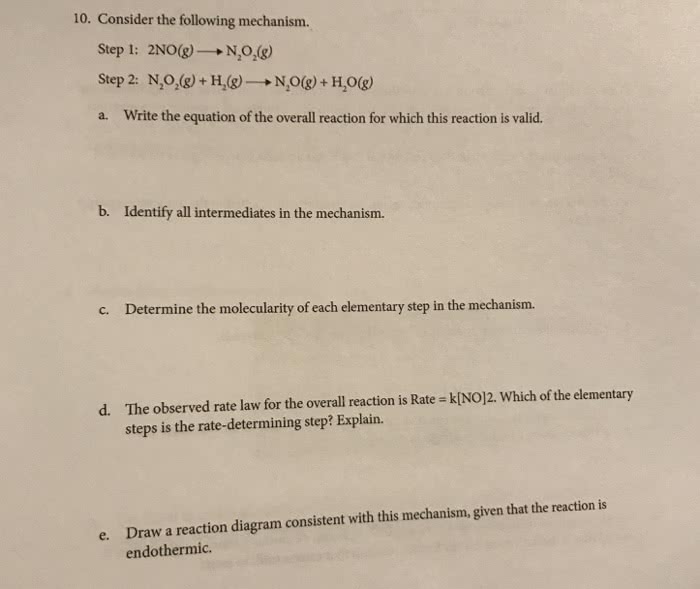AS.030.103 Study Guide - Midterm Guide: Transition State Theory, Reaction Step, Collision Frequency

Lecture 13:
Reaction Kinetics:
Reaction Mechanism: series of elementary steps a given reaction takes in going from
reactants to products
Rate Law can be written for each step if we know the molecules that collide in
that step
Elementary Step: reaction whose rate law can be written from its molecularity
Molecularity (of an elementary step): number of species (ie reactants) that must collide
to produce the reaction indicated by that step
Rate Determining Step: the slowest elementary step, which determines the rate of the
overall reaction
Criteria for valid proposed mechanism (necessary but not sufficient):
1. Sum of the elementary steps must equal the overall balanced equation for the
reaction
2. Mechanism must agree with the experimentally determined rate law
k is small: slow step
k is large: fast step
* overall reaction rate law = rate law of slowest step
Rate Law of overall reaction can be used to propose a mechanism for the overall
reaction

higher T = larger k = increased rate (exponential graph)
Arrhenius Equation:
𝑘 = 𝐴𝑒%&'
()
k = kinetic rate constant at T
Ea = activation energy
R = 8.314 J/molK
T = temp (K)
A = collision frequency factor
Rearrangement:
*rule of thumb for many reactions: increase T by 10°C, rate doubles
Larger Ea ® smaller k ® decreased rate

Arrhenius: molecules must be “activated” to react, must exceed minimum
collision energy (Ea) to react
Marcelin: not all collisions=reactive, only those whose collision energy exceeds
some point
Increasing rxn temp®increases avg. particle speed
*area betw Eaf and Ear = delta E
Activation energy is always positive but can be small
Elementary rate rxns always increase with temp
Steady State Approximation: assume that concen. Of reactive intermediates remain
constant through most of rxn
Lecture 14:
Example:
Document Summary
Reaction mechanism: series of elementary steps a given reaction takes in going from reactants to products. Rate law can be written for each step if we know the molecules that collide in that step. Elementary step: reaction whose rate law can be written from its molecularity. Molecularity (of an elementary step): number of species (ie reactants) that must collide to produce the reaction indicated by that step. Rate determining step: the slowest elementary step, which determines the rate of the overall reaction. * overall reaction rate law = rate law of slowest step. Rate law of overall reaction can be used to propose a mechanism for the overall reaction higher t = larger k = increased rate (exponential graph) Arrhenius equation: = k = kinetic rate constant at t. *rule of thumb for many reactions: increase t by 10 c, rate doubles. Larger ea smaller k decreased rate.


